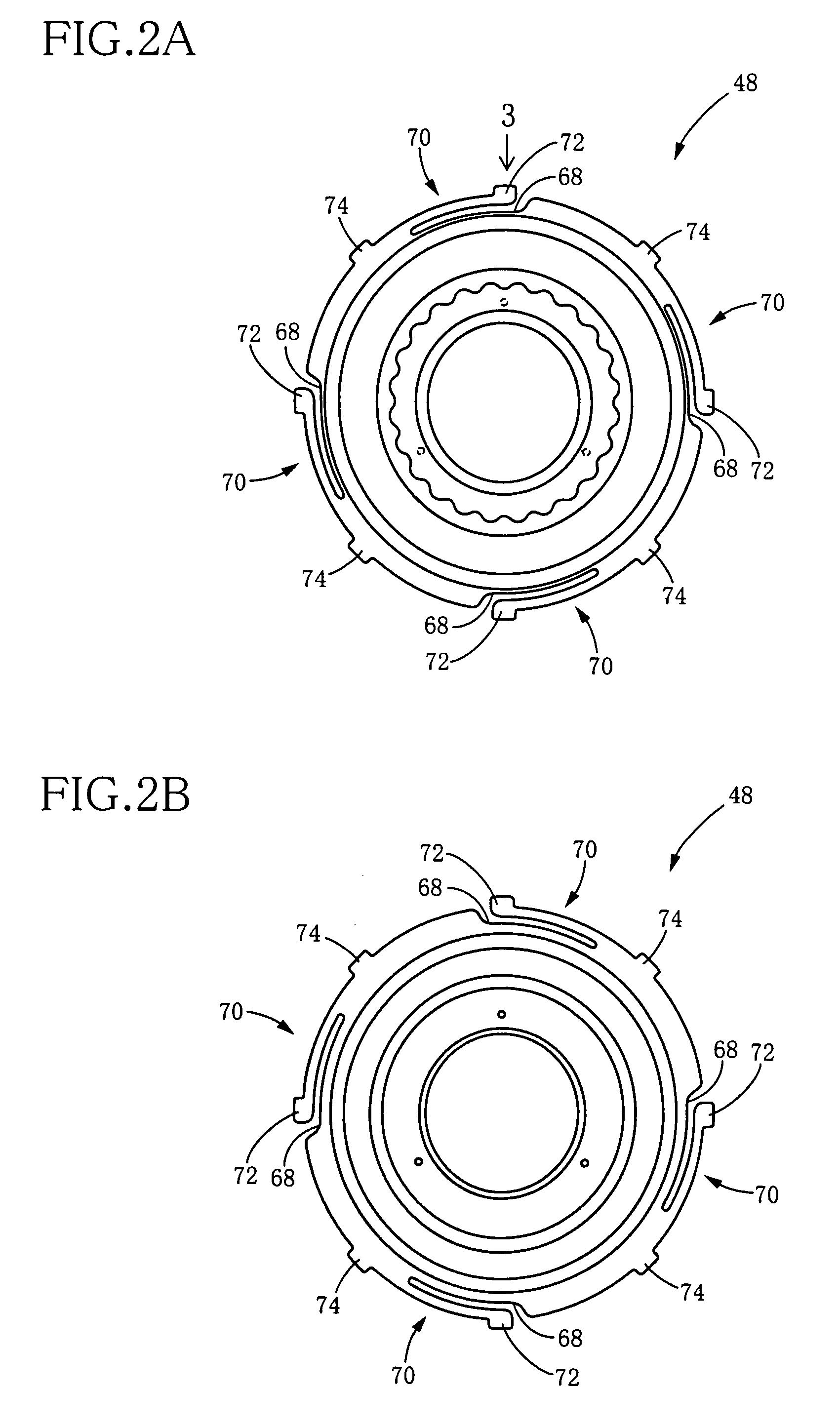Piston for automatic transmission
a technology of automatic transmission and piston, which is applied in the direction of mechanical actuator clutches, mechanical apparatus, clutches, etc., can solve the problems of increasing the power loss of automatic transmission, deteriorating the durability of the piston and etc., to improve the power transmission efficiency of automatic transmission, and improve the durability of the frictional coupling elements
- Summary
- Abstract
- Description
- Claims
- Application Information
AI Technical Summary
Benefits of technology
Problems solved by technology
Method used
Image
Examples
first embodiment
[0054]The stepped portion 84 functions as a recessed portion. As shown in FIG. 8, this stepped portion 84 is formed by forming a recess in one of opposite surfaces of the second piston member 82 which is on the side of the retainer ring 81 (namely, on the lower side of the second piston member 82 as seen in FIG. 8). The stepped portion 84 is formed when the second piston member 82 is formed by pressing. Accordingly, the cost of manufacture of the second piston member 82 is the same as that of the second piston member 48 of the Line B—B in FIGS. 7 and 8 indicates a position at which the elongate arcuate claw 70 is bent in the axial direction of the second piston member 82.
[0055]As shown in FIG. 7, the stepped portion 84 is formed at the fixed end portion of the claw 70, which is located adjacent to the closed end of the arcuate cutout 68 indicated by the line B—B (position at which the claw 70 is bent). Described in detail, the stepped portion 84 consists of a first part on one side...
second embodiment
[0064]In the second embodiment, the stepped portions 84 are formed by forming respective recesses in respective local portions of the surface of the second piston member 82 facing the retainer ring 81, such that those local portions have a smaller wall thickness than the other local portions. However, stepped portions may be formed in the second piston member having a constant wall thickness, by bending respective local portions of the second piston member, such that the local portions are recessed to prevent their contact with the retainer ring 81.
[0065]Although the second piston member 82 has the recessed portions in the form of the stepped portions 84 having a constant depth, the recessed portions are not limited to the stepped portions, but may take any other configuration, such as recesses having a curved bottom surface.
[0066]The retainer ring 81 and the second piston member 82 overlap with each other in the radial direction and therefore contact with each other, also at points...
PUM
 Login to View More
Login to View More Abstract
Description
Claims
Application Information
 Login to View More
Login to View More - R&D
- Intellectual Property
- Life Sciences
- Materials
- Tech Scout
- Unparalleled Data Quality
- Higher Quality Content
- 60% Fewer Hallucinations
Browse by: Latest US Patents, China's latest patents, Technical Efficacy Thesaurus, Application Domain, Technology Topic, Popular Technical Reports.
© 2025 PatSnap. All rights reserved.Legal|Privacy policy|Modern Slavery Act Transparency Statement|Sitemap|About US| Contact US: help@patsnap.com



